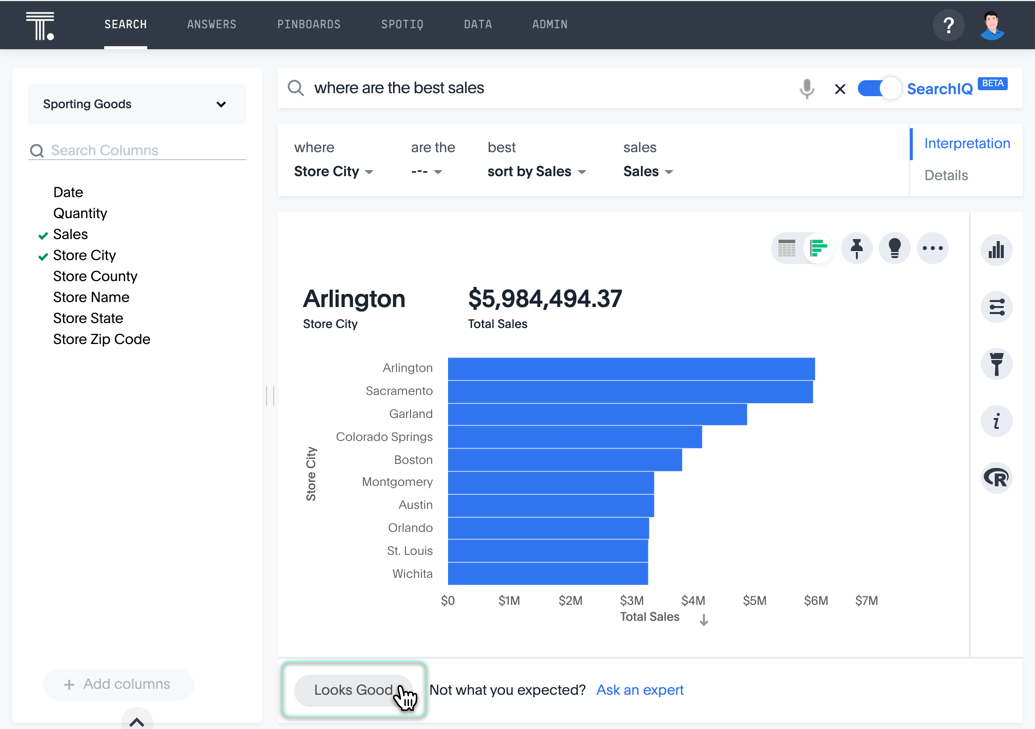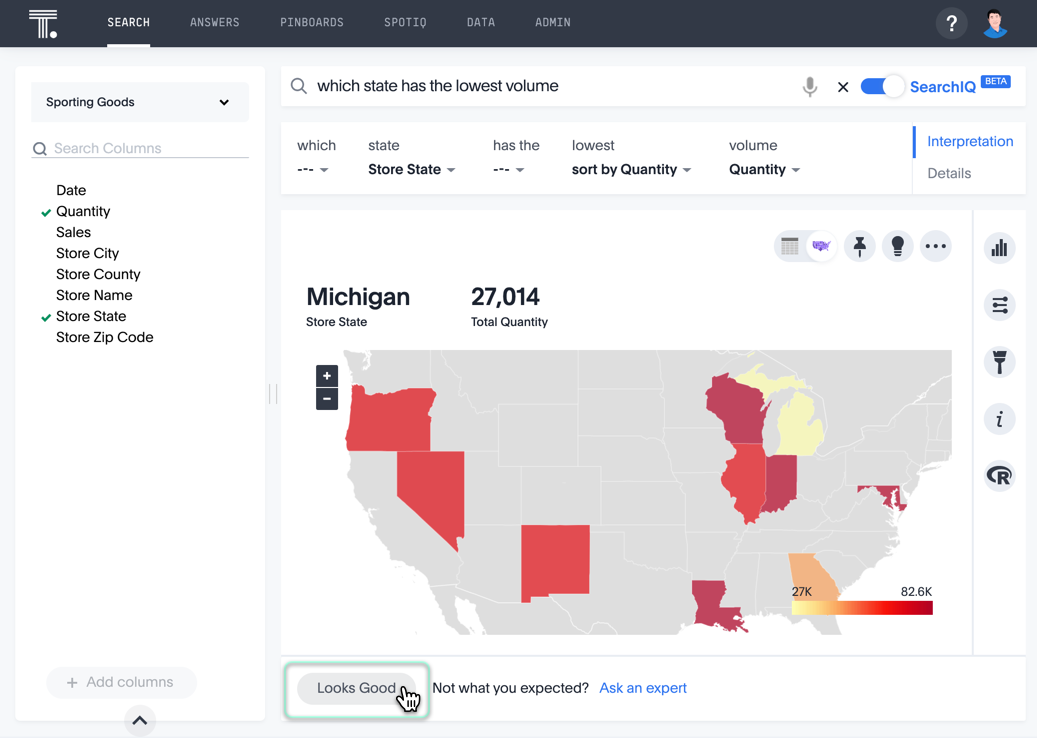SearchIQ is in Beta.
There are two complementary paths for optimizing SearchIQ to understand natural language search, Data Modeling and Language Modeling. Also, consider the the Training Examples
Data modeling settings
Add experts to the data source to enable the Ask an Expert workflow. This supplies users with another path to getting an answer when they get stuck.
Language modeling
We bundle SearchIQ with a set of pre-defined templates that help it understand natural language, and return the best possible answers. You can also add your own templates for each data source, and teach it new language interpretations:
Teach SearchIQ using a saved SearchIQ answer
See Teach SearchIQ your language.
- Select a saved answer.
- Click on one of the dropdown phrases that shows how SearchIQ interprets the search terms, and click Teach.
Use new searches to teach SearchIQ
We recommend that you train SearchIQ by performing at least 50 natural language searches. This teaches SearchIQ how to map common questions to relevant entities. Use points described in Teach SearchIQ for any unexpected answers.
- For best results, use simple and short queries.
- Ask questions that contain only exact column names or their synonyms.
- Use exact values for filtering.
- Use keywords. See Keywords.
- Use stopwords. See Stop Words.
When SearchIQ returns a satisfactory table or chart, remember to click the Looks Good button to provide the necessary feedback.
Training Examples for SearchIQ
Example 1: where are the best sales
In this example, the query returned a very good answer, by interpreting where as Store City and best as sort by Sales. The chart Looks Good, and this is valuable feedback for training SearchIQ.

Example 2: which state has the lowest volume
In this example, the query returned a very good answer, by inerpreting lowest as sort by Quantity and volume as Quantity. This chart also Looks Good, and provides valuable feedback for training SearchIQ.
